Distinctive townhouses and prestigious villas
Distinctive townhouses and prestigious villas
Impressive townhouses and villas have shaped Gescher’s appearance for more than 100 years. All of them reflect the town’s prosperity, which occurred largely during the upswing of the textile industry from 1850 onwards. Factory owners then preferred to live in Hauptstrasse (main street) and transformed it to their wishes. The mansions they built are typical of the time, with styles ranging from neo-renaissance to neo-gothic and historicism. Influences from the Netherlands and the industrial regions of the Rhineland are visible not only on the outside, but also inside the mansions, where terrazzo floors, stucco ceilings and impressive staircases, often based on the Italian style, reflect their owners’ wealthy lifestyle.
The villa of the Huesker family was built on an island called Gräfteninsel, which used to belong the "Gasgare" farm.
The distinctive, old townhouses also bear witness of the past and form the townscape. Some of them received light stucco facades in the 19th century as a “modern” makeover, such as the former vicarage and the houses in Armlandstraße 3-5. Richly structured towards the street, these buildings have many decorative elements in Renaissance style (window frames, cast-iron door grilles, etc.), whereas on the rear side, the original stone facade of the late 18th century has been maintained.
The core of the townhouse in Hauptstrasse 10 (formerly Schmitz) was built in 1682 as the official residence of the bailiff. For a long time it was the only house in town which had a front garden, reflecting the position of its owner as the highest official in town.
Each villa and townhouse has its own history and background. Individual Information boards can often be found on these buildings.
Not all of the villas and townhouses have survived. Some were demolished when urban developers regarded them as an obstacle to their development goals, in particular in the 1980s and 1990s. Thus Villa Edelbrock in Hauskampstrasse had to give way to a parking area. In Hauptstrasse, some of the stylish property fencing was removed when roads were widened.

Villa, Hauptstraße 30

Hochwertige Details im Innern

Villa, Hauptstraße 24

Villa, Hauptstraße 18

Bürgerhaus, Hauptstraße 17

Bürgerhaus, Armlandstraße 3-5

Hotelbau, Hauskampstraße 12

Gräftenhof Huesker von 1911
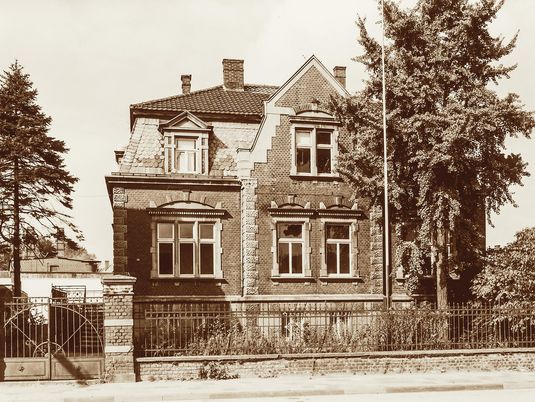
Verlorene Villa – heute Parkplatz
Carnival in Gescher
Carnival in Gescher
Carnival in Gescher stems from the historical custom of neighbourhood clubs. One custom, the begging for sausages, provides a solid food basis for the revelling.
In the 19th century, the church in the Münsterland region ordered a "forty-hour prayer" just before Lent - probably also to counteract the merrymaking. But carnival fools were not to be fooled. They simply moved carnival forward by two weeks to avoid this restriction, and still do so.
In 1934 the neighbourhood club "Berliner Tor" brought along a decorated float with their music and costume group when they went round to beg for sausages. Other neighbourhood clubs followed suit and the carnival parade in Gescher was born.
In 1950, the carnival parade was led by a prince, Josef I (Schlüter), for the first time.
Since then carnival in town has developed rapidly. Today the town’s carnival society organises the events. Their "fool’s conclave" determines a new regent alias "Royal High-nonsense" every year.
In 2020, seventy years after the first prince was crowned, Marion I. (Pierk) was enthroned as first princess of the Bell Town, an event cheered on by the carnival crowd.
Two processions on carnival weekend
On Saturday Bacchus, god of wine and symbolic figure of carnival in Gescher, is led to the town hall in a parade of the neighbourhood clubs and other groups. There he is welcomed by thousands of people.
Sunday is the day when the fool’s hustle and bustle comes to its climax. Prior to the parade, the new prince or princess is enthroned and for three days is given the keys to the townhall by the mayor. Then the new regent// enters the prince’s carriage. The parade begins! Neighbourhood clubs, associations and folks from other towns including the former twin town of Neede (NL) join in, either on imaginative carriages or as groups of feet wearing colourful costumes. More than ten thousand visitors from near and far fill the streets. Several music groups are part of the parade which ends with the magnificent prince’s carriage as its final float.
Up to the 1970s, mainly men took part in the carnival parade. Since then, the so-called "lindworm of joy" has become a festival for the whole family.
Further information is available at www.karneval-gescher.de

Der Prinz 1957 auf dem Weg durch den Ortskern – die Prinzenglocke noch aus Pappmaschee

Festauftakt, das Wurstaufholen

Wagen vom „Berliner Tor“, 1937

Kritik am Gemeinderat – 1965

Origineller „Kleinwagen“, 1957
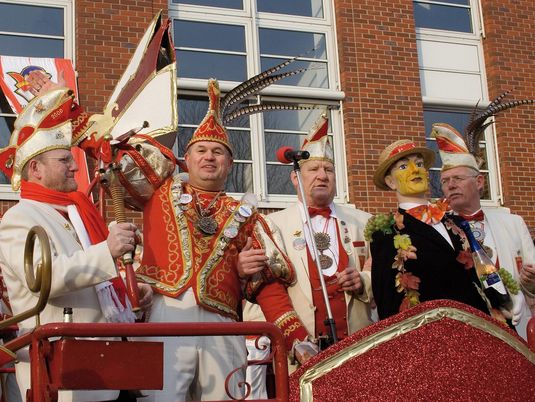
Begrüßung des „Bacchus“

Gespanntes Warten auf den Prinzen
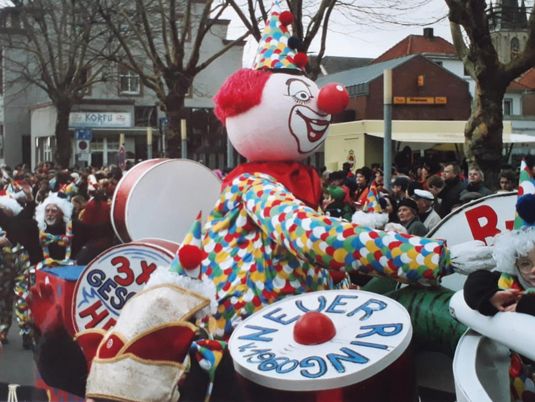
Mottowagen von 2004

Für besondere Leistungen
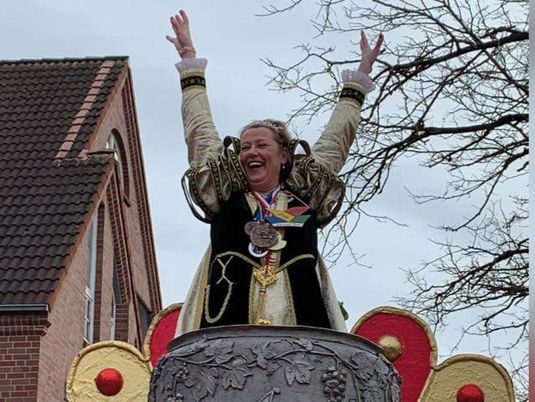
Marion I.– 2020
Clubs and societies
Clubs and societies
Gescher has around 140 different clubs, societies and associations: sports clubs, social clubs, heritage clubs, social initiatives and church groups. Many of them are active in music - from marching bands to choirs.
The seven social clubs originating from marksmen’s clubs have the longest tradition. St.-Pankratius, for instance, can trace its roots back to the year 1605.
The sports club SV Gescher is the largest club with around 1,800 members. It was formed in 2013 when the clubs TSG, SF Tornado, BSV Harwick and FSV merged and has a strong emphasis on football. TV Gescher, a gymnastics club, which was formed in 1908, has about 1100 members.
For more information, go to “Vereine” under www.gescher.de
Civic foundation
"Achieving more together, for our town and its people" is the foundation’s motto. It was established in 2015 and actively tackles the challenges of the town's social life in a variety of ways. So far, it has supported social initiatives (aid for refugees in the "Bunte Haus"), educational projects (digital equipment for the library), cultural projects (art exhibitions and concerts) and environmental protection measures (planting campaigns). Since 2019, a network formed at the foundation's initiative has made it easier for local clubs to exchange information.
For more information on the civic foundation, see www.buergerstiftung-gescher.de
Actively involved citizens
The people of Gescher have a strong sense of community. On several occasions they have stood up to defend their interests or fight against undesirable developments. Here are just two examples of their actions:
In 1990, an action group opposed the construction of a domestic waste dump in Estern in the district of Borken. This was mainly out of concern for the drinking water reserves in the extraction area in Nordvelen. 7,500 people protested outside the town hall and at the planned waste dump site. As a result, the district council re-planned its disposal concept. Today a large composting plant with a recycling centre is operated on the site.
In 2012/ 2013, numerous concerned people held weekly vigils to protest against the threatened demolition of the former parish church of St. Mary's Assumption. Some of the actions were highly emotional and made an impact. The diocese of Münster gave in and the building was preserved. New buildings were added and "Marien-Quartier“ came into existence.
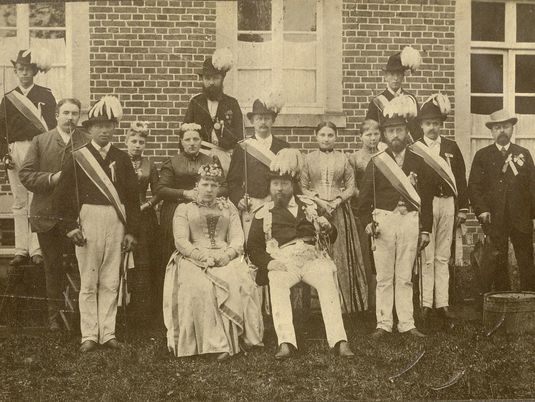
Throngefolge von 1890 der St. Pankratius – Schützengilde
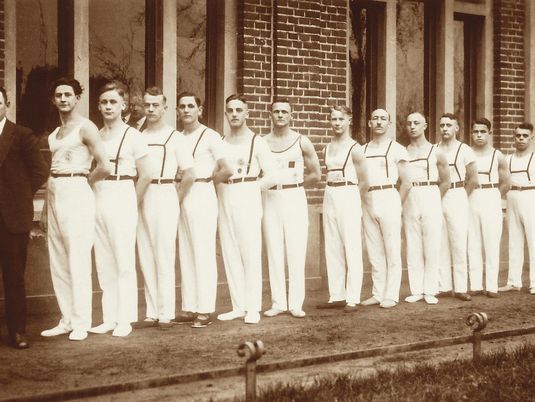
TV Gescher von 1908

Theatergruppe „Frohsinn“, 1930

Musikverein beim Konzert 1947

Start der Bürgerstiftung

Deutschunterricht im bunten Haus

Aktive der Coronahilfe

Protest gegen die Mülldeponie

Kundgebung 1990

Mahnwachen für Kirchenerhalt